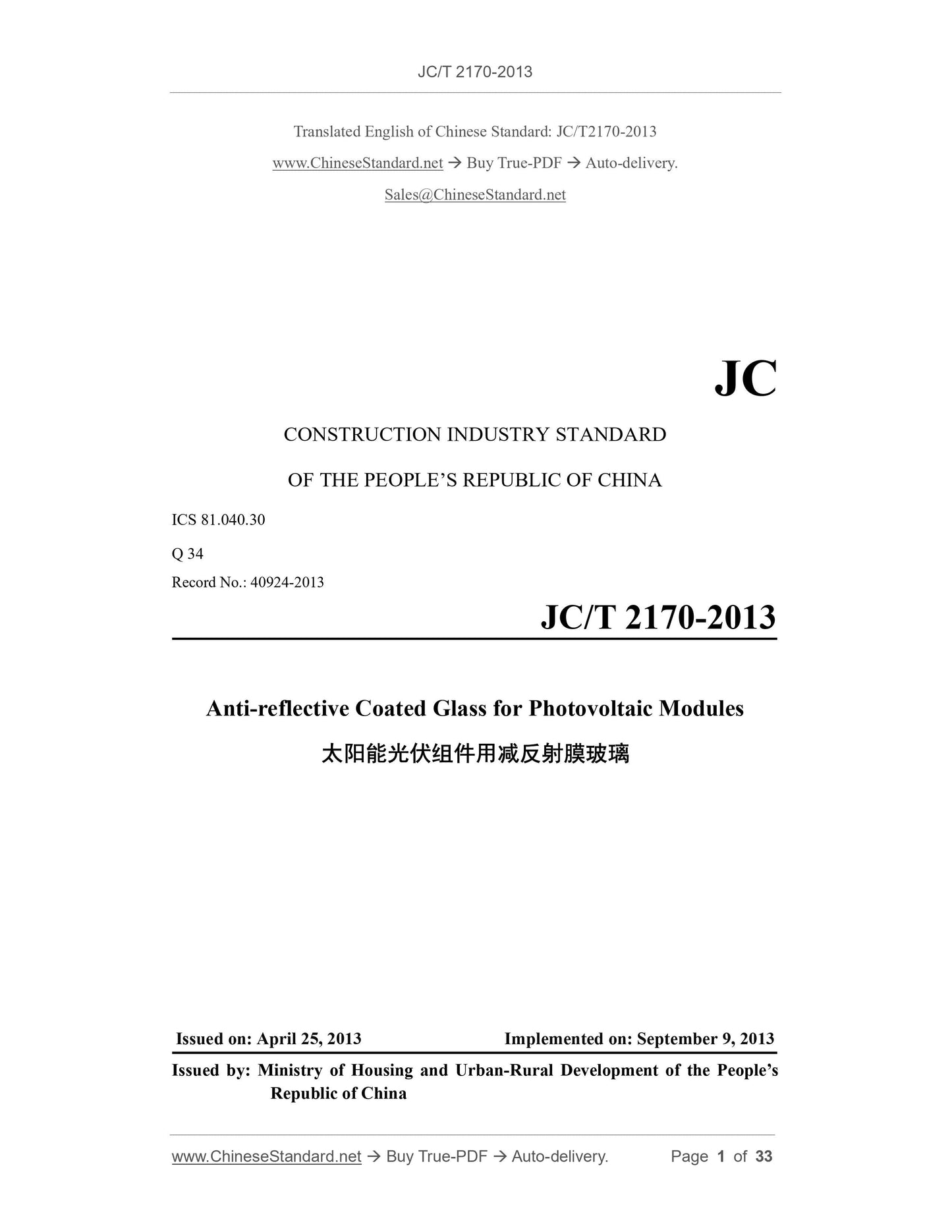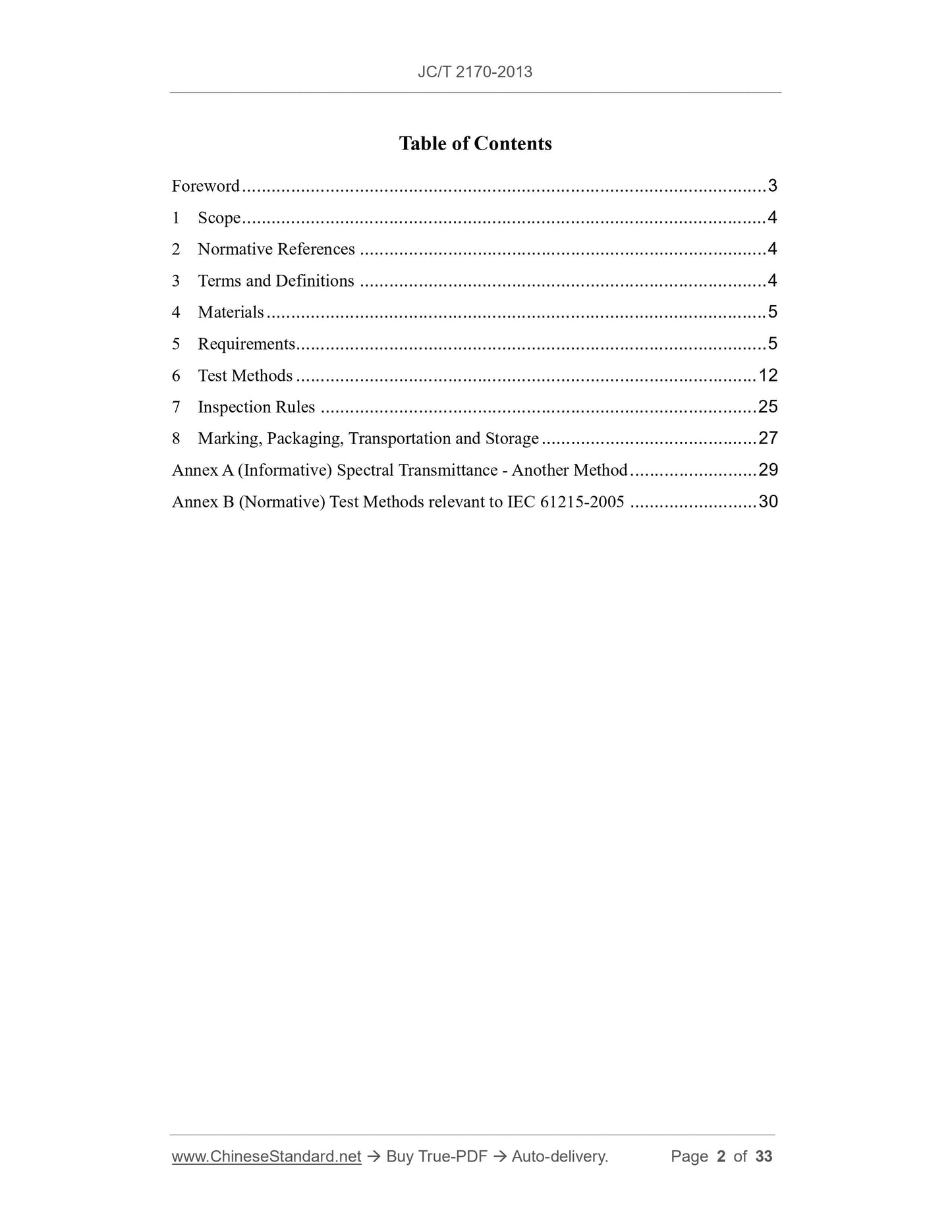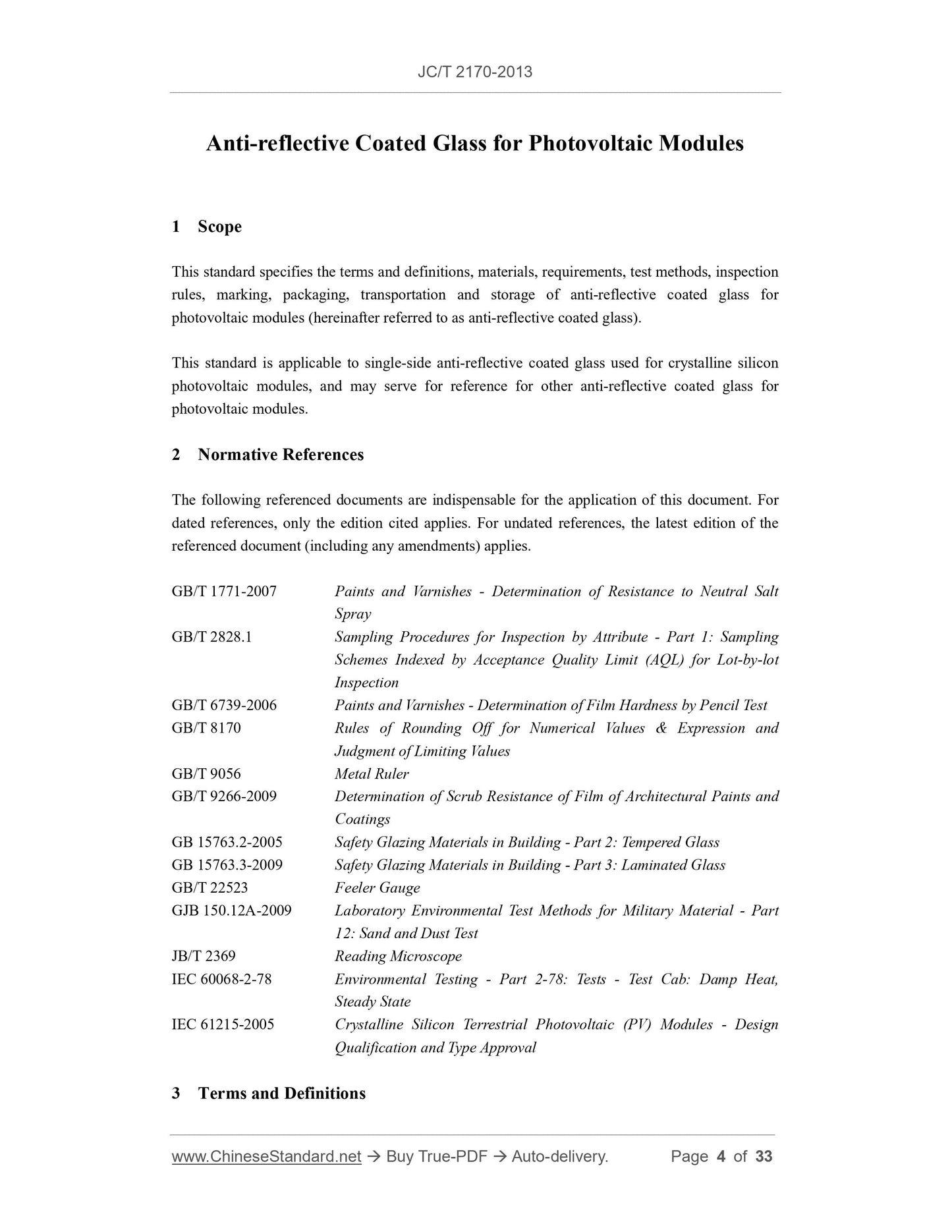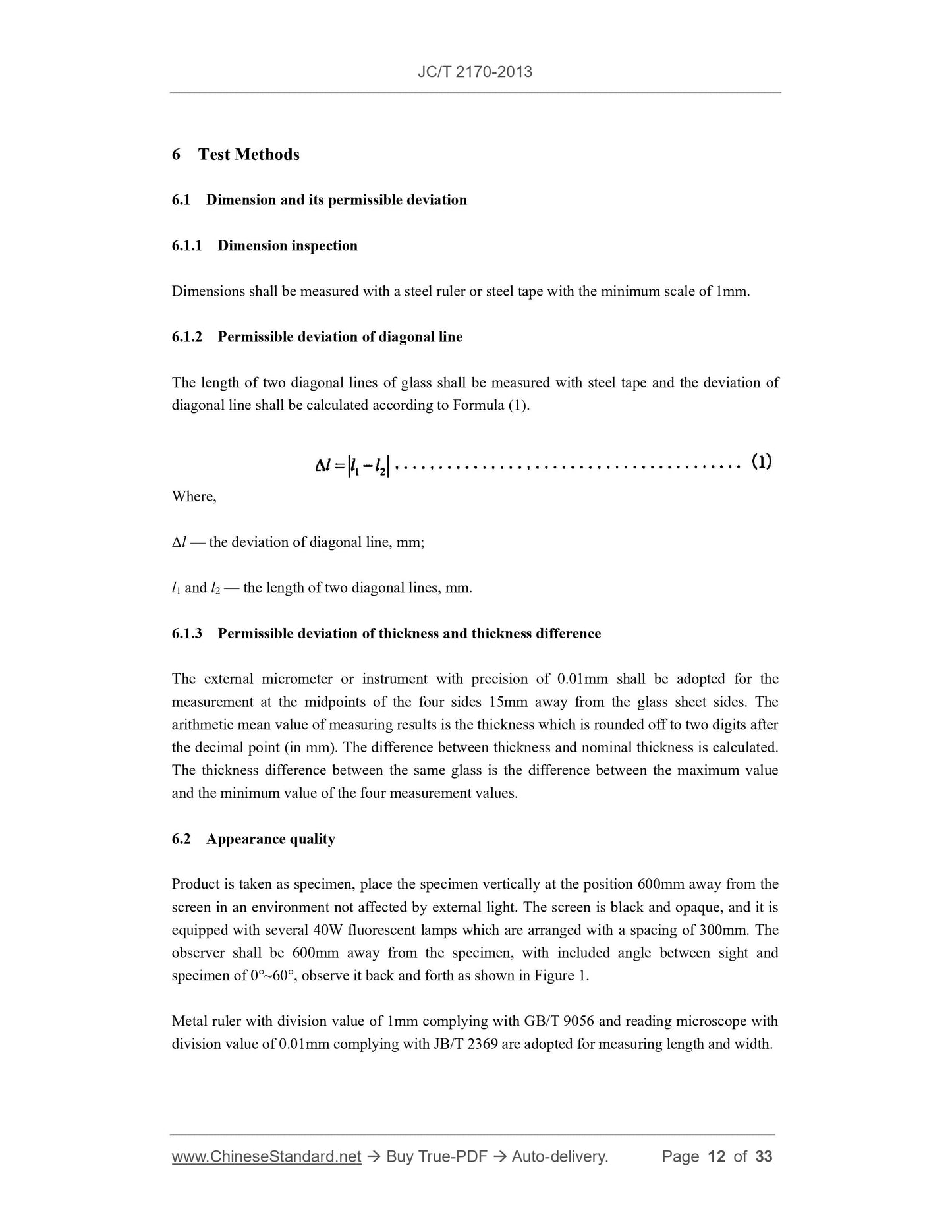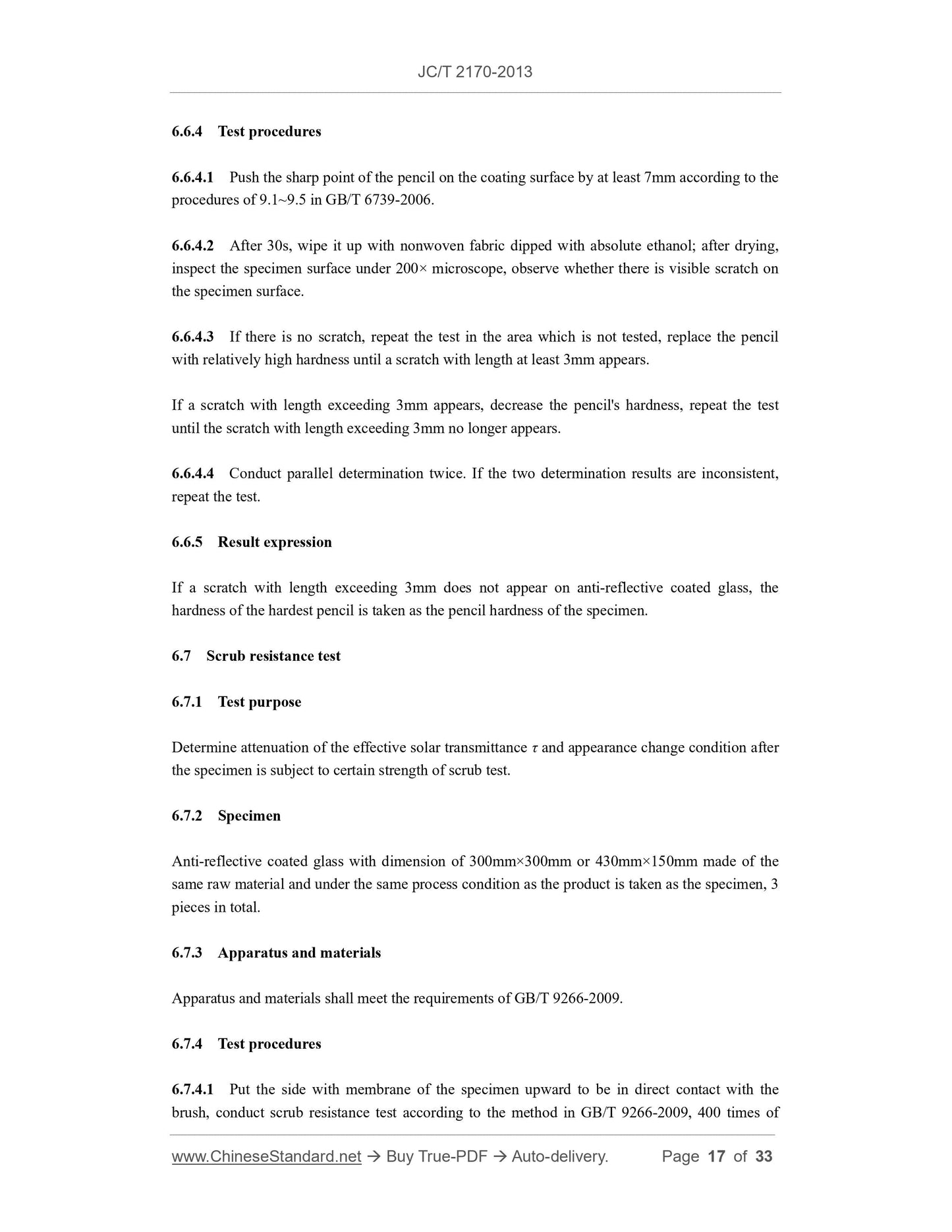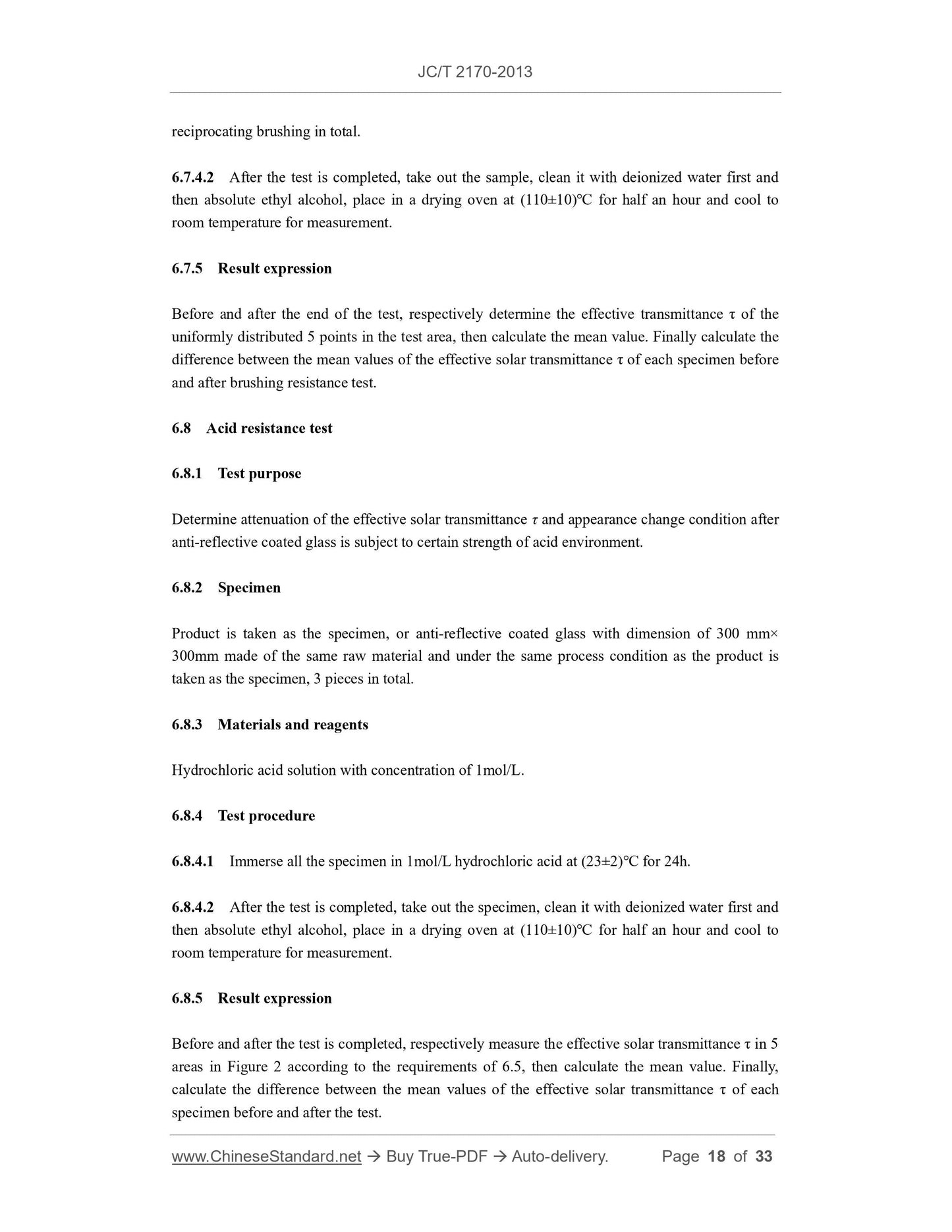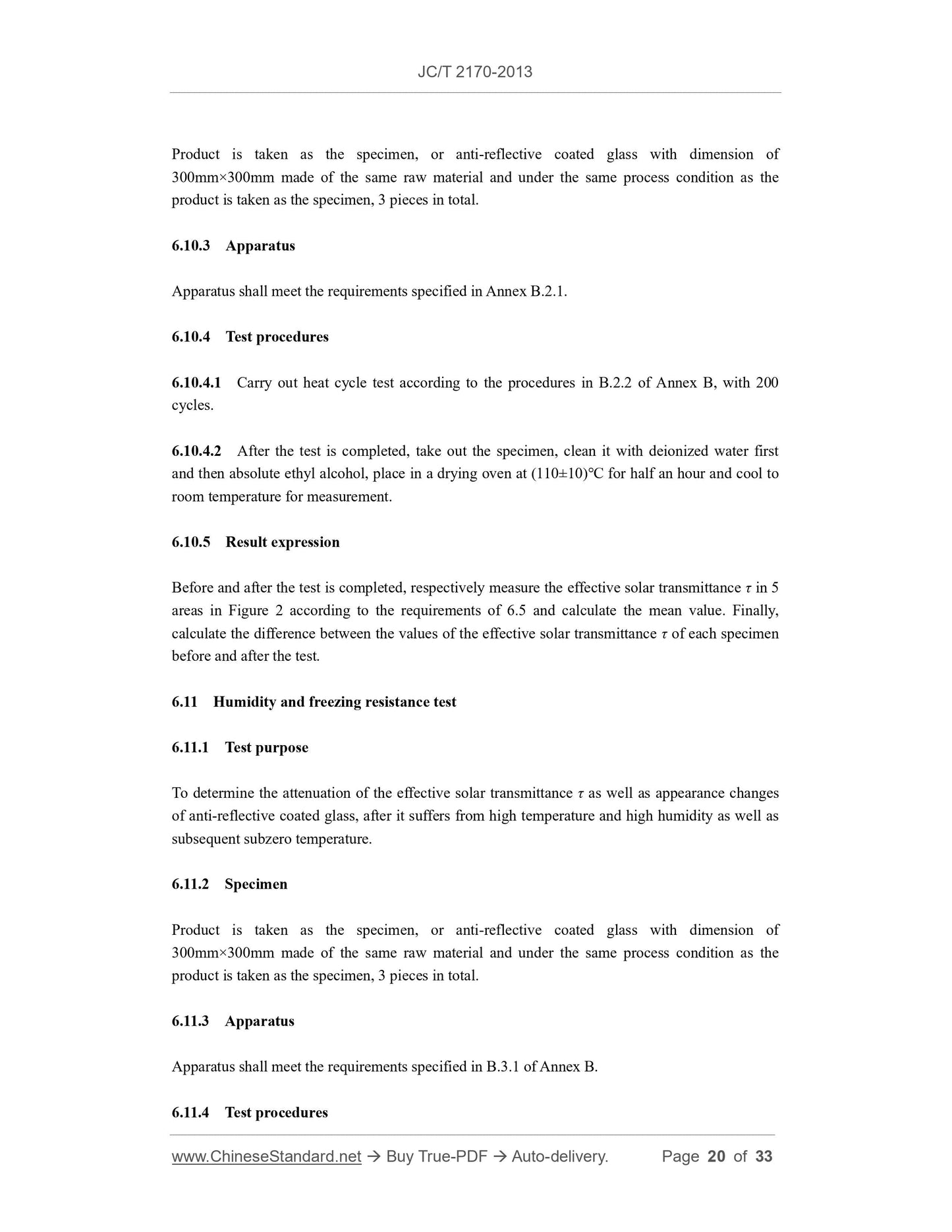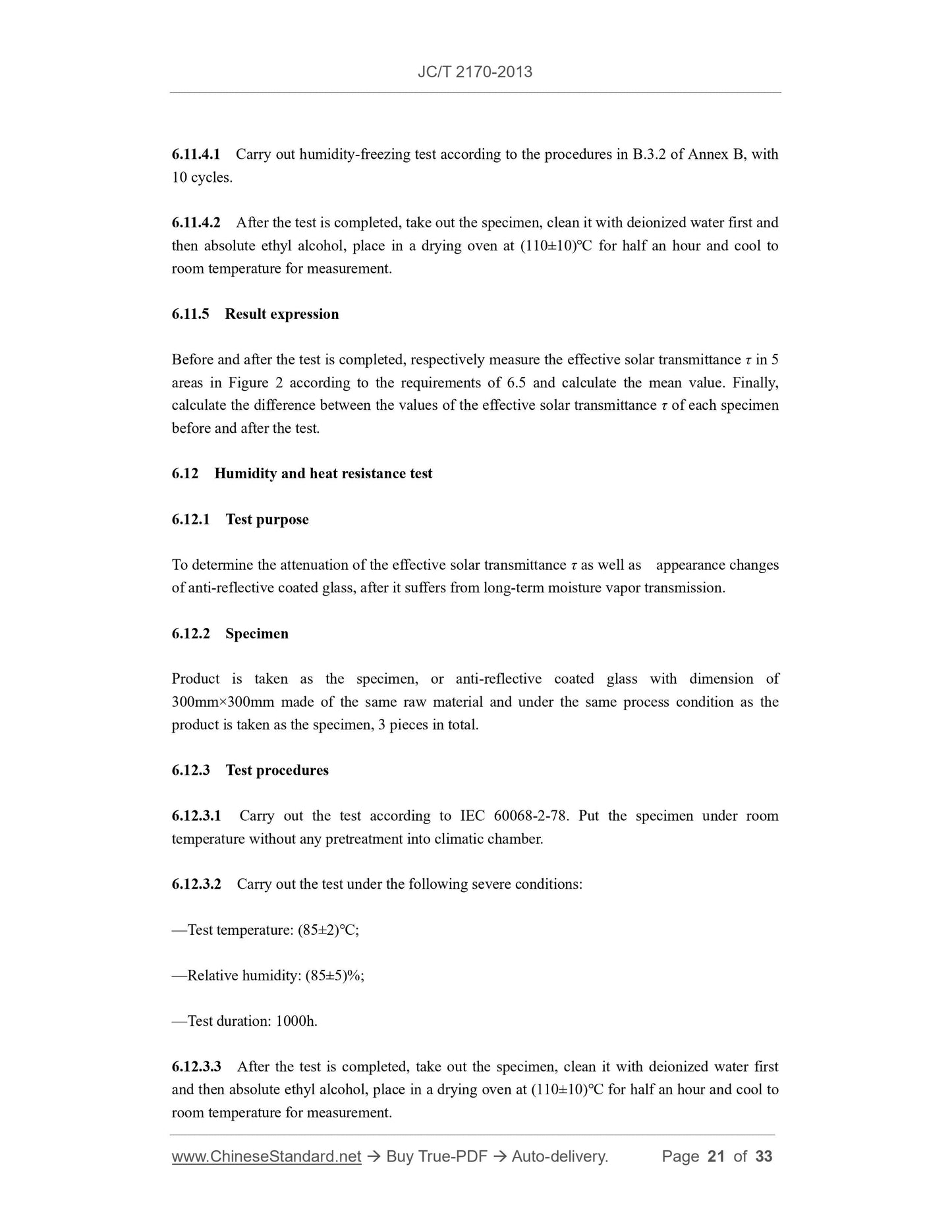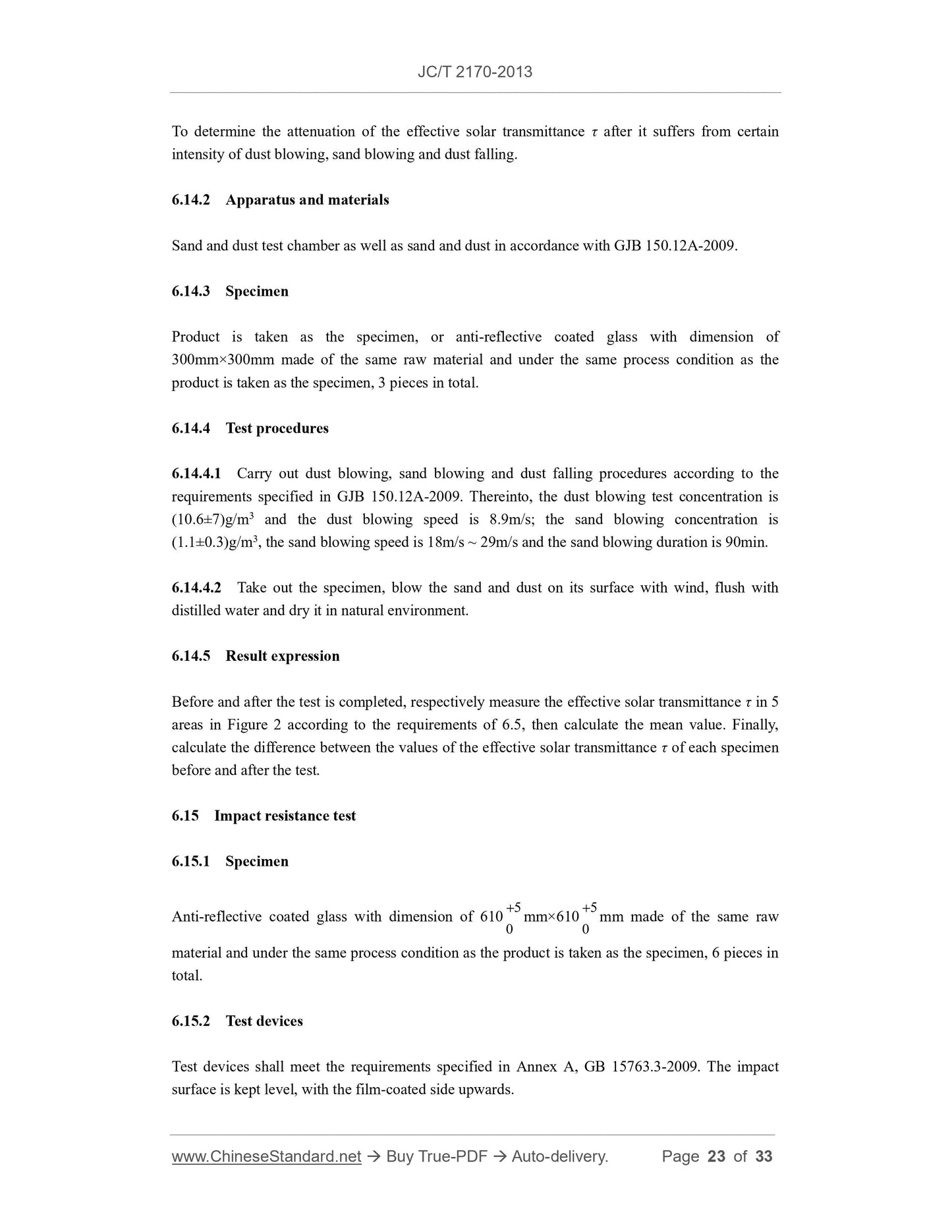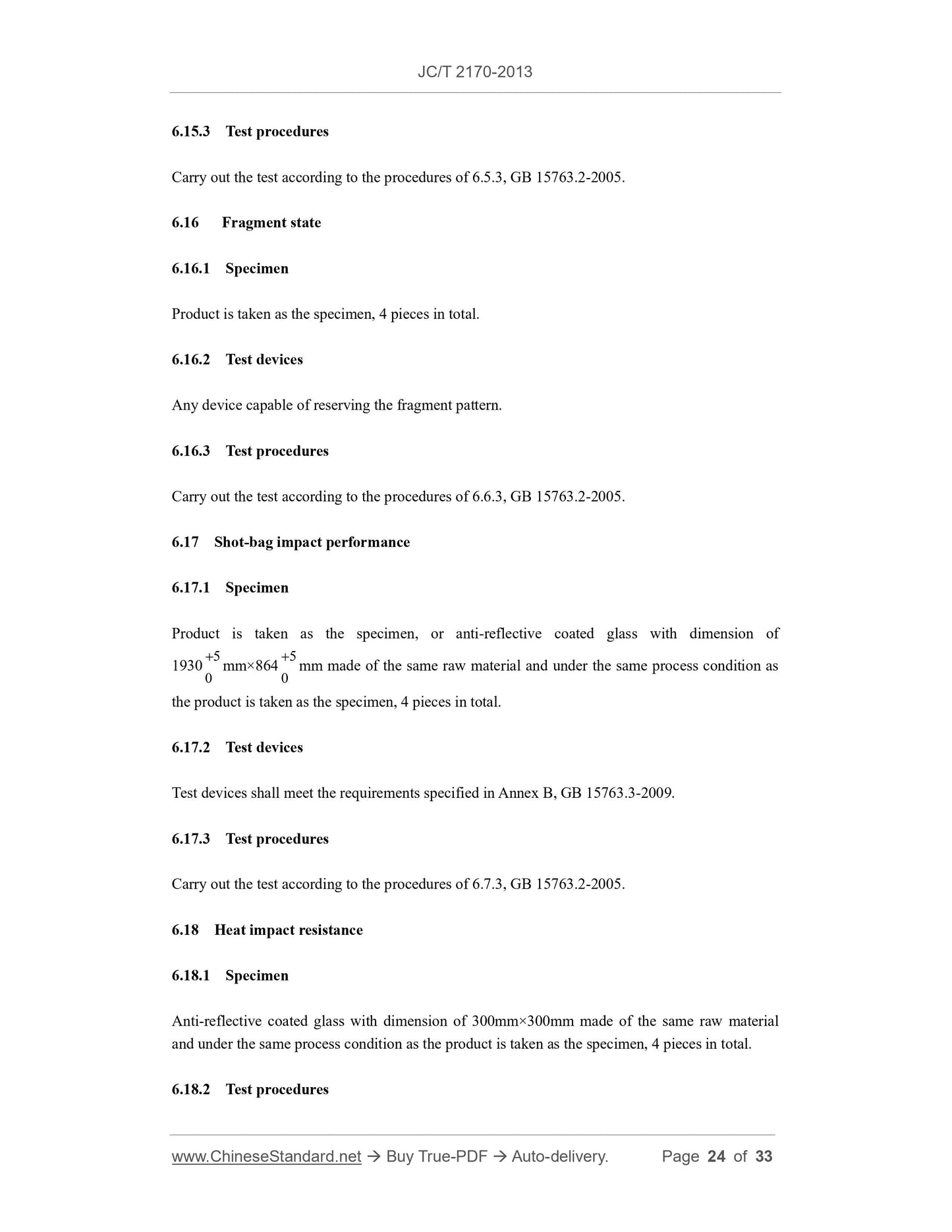1
/
of
11
www.ChineseStandard.us -- Field Test Asia Pte. Ltd.
JC/T 2170-2013 English PDF (JC/T2170-2013)
JC/T 2170-2013 English PDF (JC/T2170-2013)
Regular price
$305.00
Regular price
Sale price
$305.00
Unit price
/
per
Shipping calculated at checkout.
Couldn't load pickup availability
JC/T 2170-2013: Anti-reflective coated glass for photovoltaic modules
Delivery: 9 seconds. Download (and Email) true-PDF + Invoice.Get Quotation: Click JC/T 2170-2013 (Self-service in 1-minute)
Newer / historical versions: JC/T 2170-2013
Preview True-PDF
Scope
This standard specifies the terms and definitions, materials, requirements, test methods, inspectionrules, marking, packaging, transportation and storage of anti-reflective coated glass for
photovoltaic modules (hereinafter referred to as anti-reflective coated glass).
This standard is applicable to single-side anti-reflective coated glass used for crystalline silicon
photovoltaic modules, and may serve for reference for other anti-reflective coated glass for
photovoltaic modules.
Basic Data
| Standard ID | JC/T 2170-2013 (JC/T2170-2013) |
| Description (Translated English) | Anti-reflective coated glass for photovoltaic modules |
| Sector / Industry | Building Materials Industry Standard (Recommended) |
| Classification of Chinese Standard | Q34 |
| Classification of International Standard | 81.040.30 |
| Word Count Estimation | 23,250 |
| Quoted Standard | GB/T 1771-2007; GB/T 2828.1; GB/T 6739-2006; GB/T 8170; GB/T 9056; GB/T 9266-2009; GB 15763.2-2005; GB 15763.3-2009; GB/T 22523; GJB 150.12A-2009; JB/T 2369; IEC 60068-2-78; IEC 61215-2005 |
| Regulation (derived from) | Ministry of Industry and Information Bulletin 2013 No. 23; industry standard for filing Notice 2013 No. 7 (No. 163 overall) |
| Issuing agency(ies) | Ministry of Industry and Information Technology |
| Summary | This standard specifies: Solar PV modules with anti-reflective coating glass (hereinafter referred to as anti-reflection coated glass) terms and definitions, materials, requirements, test methods, inspection rules and signs, packaging, transportation and |
Share
